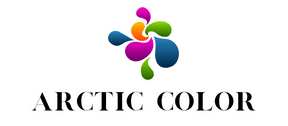What Advances in Li-Fi Technology Are Pioneering Faster Internet Speeds?

In the tech-driven world of today, the quest for faster, more reliable internet speeds has become a universal ambition. Previously, Wi-Fi dominated the stage, leading the way in wireless connectivity. However, recent advances in a relatively new player in the game, Li-Fi technology, promise to revolutionize internet speeds, making Wi-Fi seem like a relic of the past.
Li-Fi, which stands for Light Fidelity, is a technology that uses light to transmit data wirelessly. While the concept of Li-Fi was introduced as early as 2011, it’s only in recent years that we’ve seen significant strides in its development and application.
A lire aussi : What’s the Latest in AI-Driven Custom News Aggregation Apps?
The Basics of Li-Fi and Its Advantages Over Wi-Fi
To fully appreciate the advancements made in Li-Fi technology, it’s important to understand its core principles and how it outperforms Wi-Fi. Li-Fi operates by using visible light from LED bulbs to transmit binary data, a process much faster than radio waves used by Wi-Fi.
A primary advantage of Li-Fi over Wi-Fi is its lightning-fast speed. In lab tests, Li-Fi has reached data rates of up to 224 gigabits per second, far exceeding the highest Wi-Fi speeds currently achievable. This is primarily due to the higher frequency spectrum available for light waves compared to radio waves.
A lire également : What’s the Impact of Virtual Reality on Enhancing Interactive Home Fitness?
Moreover, Li-Fi offers a higher level of security. As light cannot penetrate walls, it’s near impossible for the data to be intercepted unless the attacker is in the same room. Also, since Li-Fi doesn’t interfere with other radio wave signals, it holds considerable potential for use in environments like hospitals and airplanes where Wi-Fi is often restricted.
Developments in Li-Fi Device Compatibility
Li-Fi device compatibility has been one of the main challenges in its adoption. However, recent advancements have seen the development of devices that can support the technology. Companies are now producing Li-Fi enabled light bulbs and routers, and there’s ongoing research to integrate Li-Fi technology into smartphones and other consumer electronics.
A notable stride was made by a French company, Oledcomm, which introduced a Li-Fi enabled light bulb that can reach speeds up to 100 Mbps. Another significant advancement is the Li-Fi-X dongle by pureLiFi, which allows laptops and tablets to connect to Li-Fi networks.
Furthermore, researchers are working on creating screen-to-screen networking, which will allow data exchange between different device screens using visible light. This development could offer a new dimension of interconnectivity between devices and further boost the adoption of Li-Fi technology.
Li-Fi in Real-World Applications
The real-world application of Li-Fi technology has been a major focus in recent years. From indoor navigation to underwater communication, the potential uses of Li-Fi are vast and varied.
In retail stores, for instance, Li-Fi can be used to give shoppers precise product information when they point their smartphone at a product. In museums, visitors could receive detailed information about a display when they point their device at it.
In the transportation sector, Li-Fi can be used for vehicle-to-vehicle communication, which could help reduce accidents and improve traffic management. In the marine industry, Li-Fi can allow for underwater data transmission, a task that Wi-Fi and other radio waves can’t perform due to their inability to penetrate water.
In the healthcare sector, Li-Fi could provide a secure and fast network, allowing for the quick transfer of large medical files and real-time monitoring of patients.
Challenges and Future Prospects of Li-Fi
Despite its enormous potential, Li-Fi technology also faces significant challenges. One major issue is the requirement of light for transmission, meaning it won’t work in dark environments. Also, its inability to penetrate walls can limit its range compared to Wi-Fi.
However, these challenges are not insurmountable. Solutions, such as integrating Li-Fi with existing Wi-Fi networks and using infrared light for dark conditions, are being explored.
Understanding these challenges and future prospects is key to foreseeing the trajectory of Li-Fi technology. With its groundbreaking speed and potential for secure connectivity, Li-Fi represents a promising frontier in internet technology.
As we move forward and continue to push the boundaries of what is possible with wireless communication, the question is no longer if Li-Fi will replace Wi-Fi, but when. And as advancements in Li-Fi technology continue to unfold, we are getting closer to a future where internet speeds are faster, more secure, and more reliable than ever before.
The Impact of Li-Fi on Society and Industry
As we delve deeper into the realm of Li-Fi technology, it’s becoming increasingly clear that its impact stretches far beyond just speedier internet. The potential societal and industrial applications of Li-Fi are vast, with the technology poised to revolutionize numerous sectors.
In the education sector, for example, Li-Fi could transform the learning experience. Schools, colleges, and universities could leverage this technology to provide high-speed internet in classrooms, enhancing the quality of education. High-speed data transfer could enable real-time video conferencing, seamless streaming of educational videos, and ultra-fast downloading of study materials.
In industries, Li-Fi could facilitate machine-to-machine communication for improved automation and efficiency. Factories could employ Li-Fi to connect various machines and systems for real-time monitoring and control. This could lead to more streamlined operations and increased productivity.
In the entertainment sector, Li-Fi could redefine the user experience with its high-speed data transfer capability. Streaming services could provide ultra-HD and 4K content without buffering. Online gaming could reach new heights with lag-free gaming experiences.
Li-Fi also holds potential for greener and smarter cities. Streetlights could be equipped with Li-Fi technology to provide internet connectivity throughout the city. This could also support smart traffic management systems, reducing congestion and improving overall traffic flow.
Conclusion: The Bright Future of Li-Fi
In conclusion, the advancements in Li-Fi technology are not only pioneering faster internet speeds but also revolutionizing various sectors of society and industry. Despite the challenges it currently faces, the future prospects of Li-Fi are bright, with numerous practical applications under consideration.
The advent of Li-Fi compatible devices signals a big leap forward in making this technology more accessible to the masses. The potential for screen-to-screen networking, real-world applications, and societal and industrial transformations further amplify the significance of Li-Fi’s advancements.
The question now is not about the viability of Li-Fi as a technology but about how quickly it can be adopted on a large scale. To achieve this, there needs to be a combined effort from tech companies, policymakers, and society at large. As we continue to explore the possibilities of Li-Fi, we move closer to a future where internet speeds are not just faster, but also more secure, reliable, and integrated into every aspect of our lives.
Indeed, as we move into the future, it’s clear that Li-Fi is not just a novel technology – it’s the next big thing in wireless communication. It represents a paradigm shift in how we think about and use the internet, promising to reshape our digital landscape in ways we can only begin to imagine.
